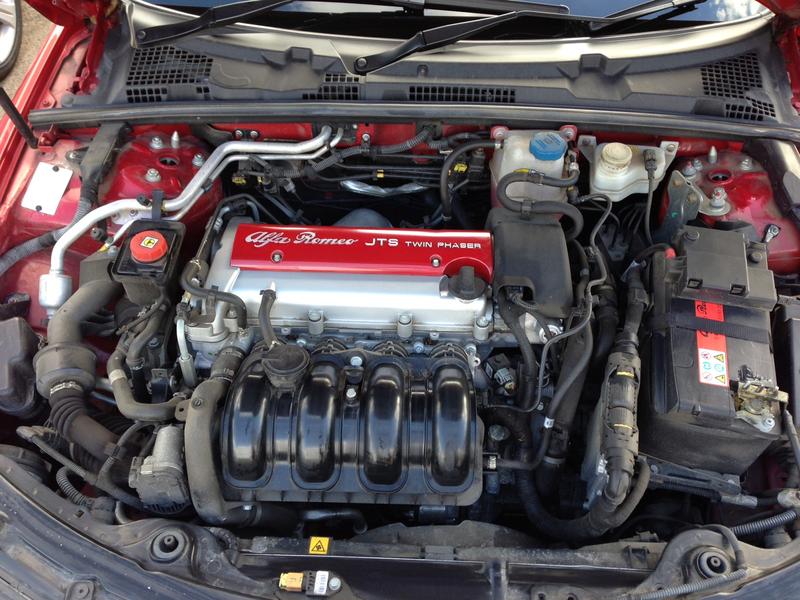The rectum and anal canal form the last portion of the gastrointestinal tract. The rectum serves as a reservoir for fecal contents, and the anal canal regulates continence and defecation via synchronization of events regulated by complex interactions between sympathetic and parasympathetic nerves, striated and smooth muscle, and environmental factors. The colon is the part of the large intestine that extends from the cecum to the rectum. The colon does not play a major role in nutrient absorption. Anatomy and Physiology Training. Large Colon Anatomy is a How To Study For Anatomy Gallery posted at. This Large Colon Anatomy was posted in hope that we can give you an Anatomy Study Tips. This article can be your reference when you are confused to choose the right Anatomy Study Tips. This Large Colon Anatomy This maybe your best option to ideas. Understanding the anatomy and physiology of SNM is imperative to obtain the best patient outcomes. Reviewing the anatomy of the sacrum and using landmarks and fluoroscopy helps to guide electrode placement for maximal contact with the nerve at the lowest frequency. transverse colon, sigmoid colon, the anterior portion of the descending colon, the anterior portion of the ascending colon, the rectosigmoid junction, and the upper. The transverse colon crosses the midline of the abdomen, from right to left at the cranial border of the mesentery. The descending colon continues caudally to the rectum and anus. It has a sigmoid flexure before it enters the pelvic cavity. Upon entering the colon, the food residue first travels up the ascending colon on the right side of the abdomen. At the inferior surface of the liver, the colon bends to form the right colic flexure (hepatic flexure) and becomes the transverse colon. Human Anatomy and Physiology is designed for the twosemester anatomy and physiology course taken by life science and allied health students. The textbook follows the scope and sequence of most Human Anatomy and Physiology courses, and its coverage and organization were informed by hundreds of instructors who teach the course. focus on the anatomy and physiology of the small and large colon each day. Pancreas The pancreas is attached to the duodenum and lies posterior to the greater curvature of the stomach. When chyme enters Anatomy and Physiology of the Bowel and Urinary Systems 1. The large intestine is the final section of the gastrointestinal tract that performs the vital task of absorbing water and vitamins while converting digested food into feces. Although shorter than the small intestine in length, the large intestine is considerably thicker in diameter, thus giving it. Pages in category Large Intestine Anatomy Physiology The following 8 pages are in this category, out of 8 total. Anatomy And Physiology Of Sigmoid Colon Human Colon Anatomy Choice Image Refer On Colon Variations In Anatomy And Physiology Of Sigmoid Colon Human Anatomy Colon Geoface# a1E142E5578E Anatomy And Physiology Of Sigmoid Colon Overview Of The Digestive System Anatomy And Physiology Ii This article describes the anatomy and histology of the colon, including its parts, features and functions. Learn this topic now at Kenhub! Other articles Large Intestine The colon is the terminal part of the GI tract, before excretion occurs. Learn all about the anatomy, parts and function of this organ. The focus of this gastrointestinal anatomy and physiology course is to teach you about the structures and functions of the gastrointestinal system and its accessory organs. Portions of the ascending and transverse colon (Jarvis, 2011). Access our free college textbooks and lowcost learning materials. Overview of the Colons Anatomy The colon is approximately 4. 5 inches wide, and is a muscular tube composed of lymphatic tissue, blood vessels, connective tissue, and specialized muscles for carrying out the tasks of water absorption and waste removal. The sigmoid colon is the part of the large intestine after the descending colon and before the rectum. The name sigmoid means Sshaped (see sigmoid; cf. The walls of the sigmoid colon are muscular, and contract to increase the pressure inside the. This feature is not available right now. Foods Journey: Physiology The colon (also called the large bowel) is an organ of the gastrointestinal tract. The job of the colon is to absorb fluids, to form stools, and to eliminate stools. The colon is a hollow tube surrounded by Physiology How Does the Colon Work Logo. The entire colon is about 5 feet (150 cm) long, and is divided into five major segments. The rectum is the last anatomic segment before the anus. The ascending and descending colon are supported by peritoneal folds called mesentery. Youll learn some general anatomy (a roadmap of your body), learn how the arm bone actually connects to the shoulder bone, and how the different organs work together to keep you alive. Anatomy Of Sigmoid Colon See more about Anatomy Of Sigmoid Colon, anatomical location of sigmoid colon, anatomy and physiology of sigmoid colon, anatomy and. WebMD's Colon Anatomy Page provides a detailed image and definition of the colon. Learn about its function, location, and conditions that affect the colon. The colon is divided into sections that include the cecum, ascending colon, hepatic flexure, transverse colon, splenic flexure, descending colon, sigmoid, and rectum. While there is universal agreement about the major sections of the colon, the nomenclature of the lower portion of the large bowel. 1 Anatomy and Physiology of the Male Reproductive System 188. 2 Anatomy and Physiology of the Female Reproductive System deep fold in the mucosa and submucosa of the small intestine colon part of the large intestine between the cecum and the rectum descending colon part of the colon between the transverse colon and the sigmoid colon The descending colon is a segment of the large intestine and is the third and penultimate segment of the colon. It transports feces from the transverse colon inferiorly along the left side of the abdominal cavity to the sigmoid colon. Anatomy of The Colon: Anatomy of The Colon It is about 1. 5 m long extends from ileocecal valve up to the anus. The colon is a cylindrical tube that is lined by moist, soft pink lining called mucosa; the pathway is called the lumen and is approximately 23 inches in diameter It consists of seven portions. Need homework and testtaking help in Anatomy and Physiology? These articles can help you understand the Anatomy and Physiology of the human body. Anatomy Physiology of the large intestine. It is important for enemas and colon cleansing to understand the anatomy and physiology of the large intestine also called colon or bowel. Large Intestine Anatomy and Physiology. The large intestine, also called the colon, is approximately 2. 3 cm) in diameter and 5 feet (1. It extends from the ileum of the small intestine to the anus, the terminal opening. Human Anatomy and Physiology This course explains the nature of matter and the principles of chemistry that are important to human physiology. You will learn principles of genetics and gain an understanding of how traits are passed from one generation to the next. Considering the size of the organ and the number of symptoms which are rightly or wrongly attributed to it, too little attention is given to understanding how the colon functions. Although many studies concerning the anatomy, nervous intervention, electrical properties and transport properties are. The anatomy and physiology of the colon affect how colon cancers typically present: Because the colon progressively narrows distally and functions physiologically to absorb water. Colon Anatomy and Physiology Cecum Blind pouch below the entrance of the ileum Almost entirely invested in peritoneum Mobility limited by small mesocecum. Digestive System Colon Digestive System Anatomy And Physiology Nursing Students, Psych. Tag: digestive system after colon surgery, digestive system after colonoscopy, digestive system colon, digestive system colon cancer, digestive system colon facts, digestive system colonoscopy, digestive system intestinal glands, digestive system sigmoid colon, digestive tract colon, digestive tract. Anatomy and Physiology of the Bowel and Urinary Systems. The colon is divided into four sections: the ascend Anatomy and Physiology of the Bo wel and Urinary Systems. The colon (large intestine) is a distal part of the gastrointestinal tract, extending from the caecum to the anal canal. It receives digested food from the small intestine, from which it absorbs water and ions to form faeces. Anatomically, the colon can be divided into four parts. The colon and rectum are held in the abdomen by folds of tissue called mesenteries. Cecum The cecum is a pouchlike passage that connects the colon to the ileum (the last part of the small intestine). Anatomy and Physiology The large intestine is a hollow tube that makes up the last 6 feet of the digestive tract. It is often referred to as the large bowel or colon (which is Anatomy and Physiology of the Colon, Rectum, and Anus. Colon The colon is approximately five feet (1. 5 meters) in length, begins at the ileocecal valve, and ends at the rectosigmoid junction. The colon is a 56ft long, Ushaped part of the large intestine (lower gastrointestinal tract). By definition, the cecum (and appendix) and anorectum, which are parts of the large intestine, are not included in the colon. The colon anatomy is displayed in the image below. Colon anatomy, front of abdomen. Large Intestine Anatomy and Physiology As mentioned earlier, the large bowel starts from the point, where the small intestine ends. To be more precise, it starts from the right iliac region of the pelvis, which is located at the right waist or just below it. The sigmoid colon is part of the hindgut. It is the last part of the colon before the rectum. It acts as a site for water absorption from the faeces, as a site for flatus to be stored before being expelled, and as a site of peristalsis. It frames the small intestines on three sides and has the following subdivisions: cecum, appendix, colon, rectum, and anal canal. The saclike cecum is the first part of the large intestine. Practice Quiz: Digestive System Anatomy and Physiology. ANATOMY AND PHYSIOLOGY Individual Components of the Gastrointestinal SystemLarge IntestineThe large intestine is horseshoe shaped and extends aroundthe small intestine like a frame. It consists of the appendix, cecum, ascending, transverse, descending and sigmoid colon, and the rectum. Tatsuo Sato, an honored member of the AACA, gives high end video dissection presentations in this series presented by Clinical Anatomy. Full text Full text is available as a scanned copy of the original print version. Get a printable copy (PDF file) of the complete article (1. 8M), or click on a page image below to browse page by page. Links to PubMed are also available for Selected References. Anatomy and physiology are the opposite sides of the same biological coin. Anatomy is the study of the body's internal and external structures while physiology studies the function of those structures, both singularly and in conjunction with one another. Science Health and medicine Human anatomy and physiology Colon, rectum, and anus. Sort by: The large intestine, or the colon, the rectum and the anus. Let's zoom in and focus on what happens after we absorb our food in the small intestine. It looks.











